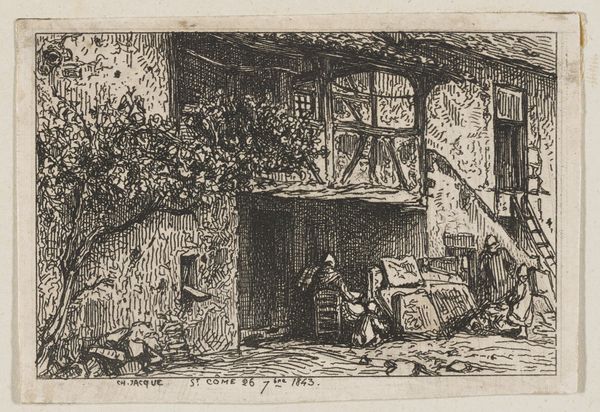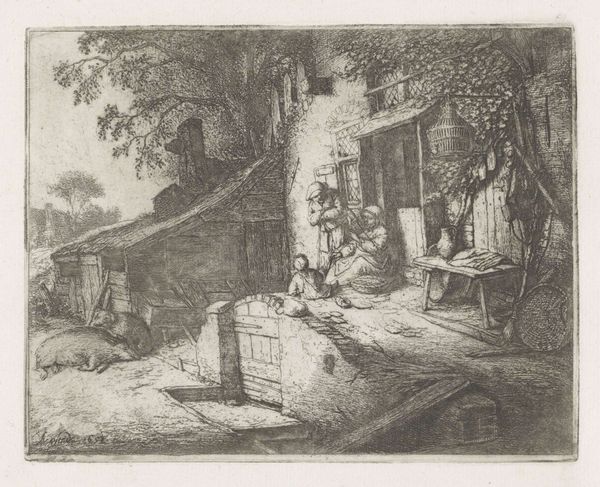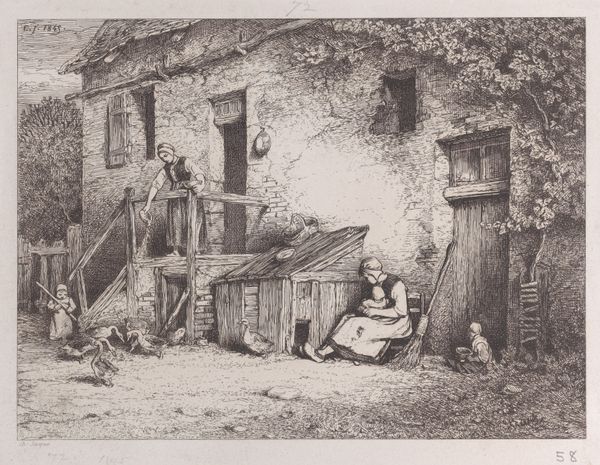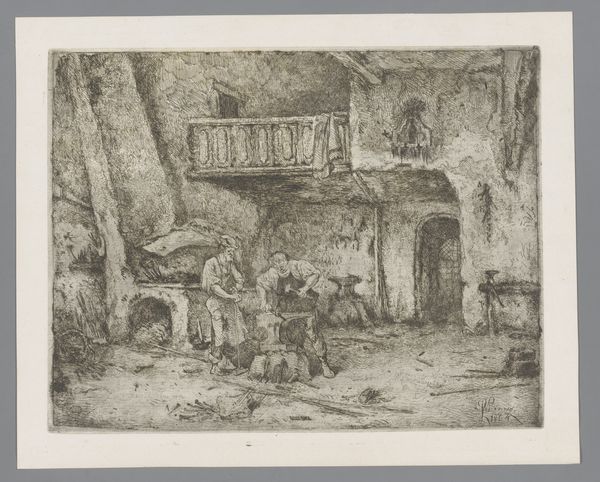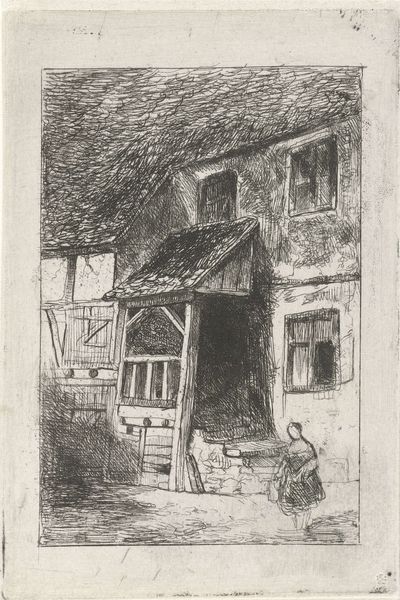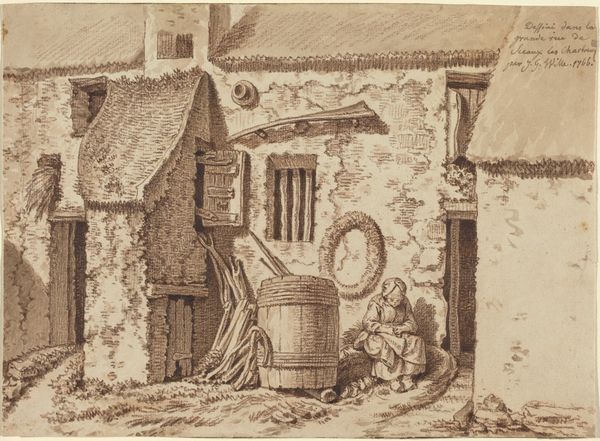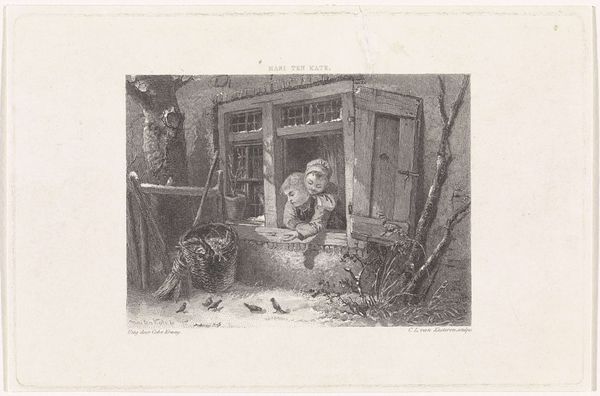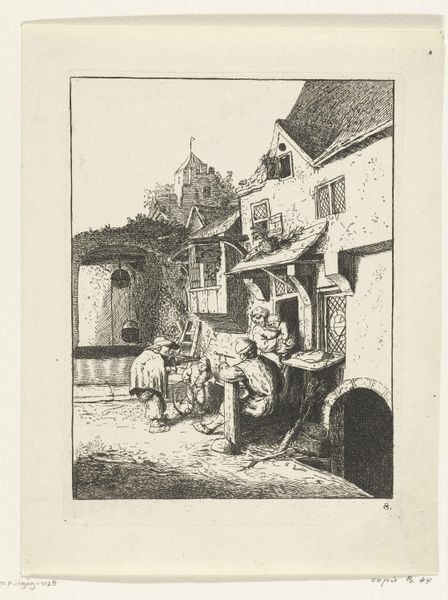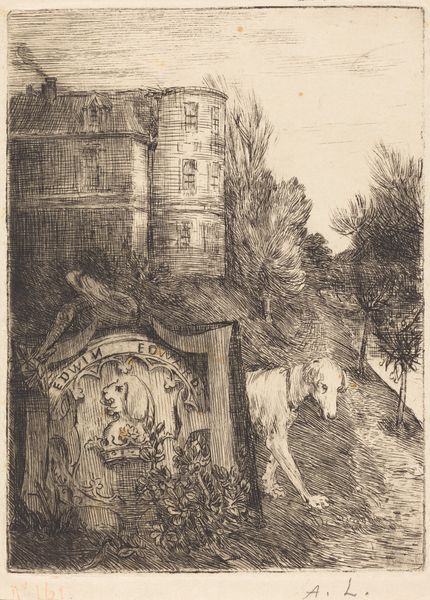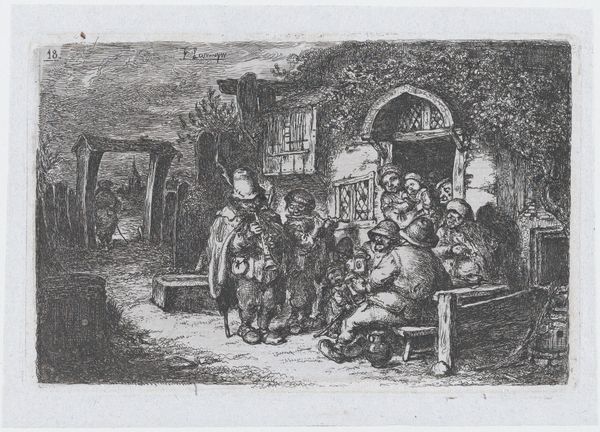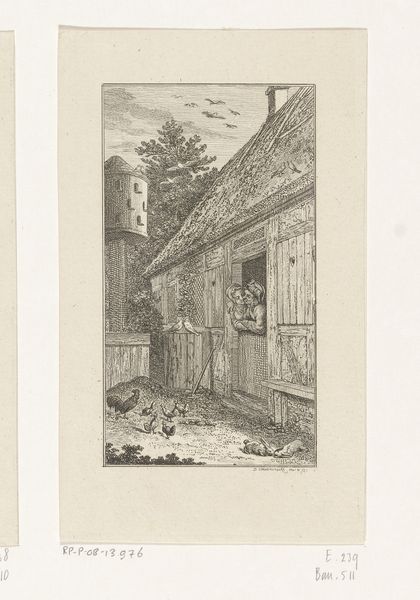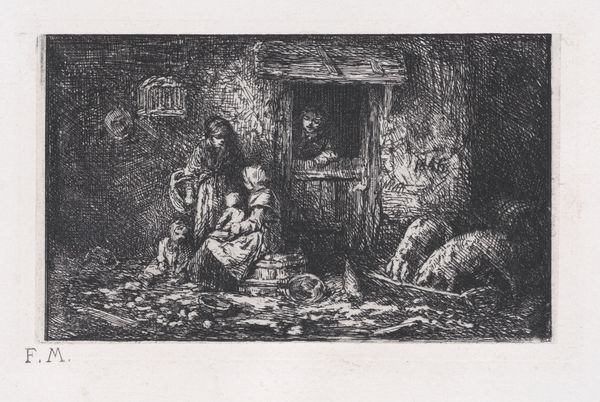
drawing, print, etching
#
drawing
# print
#
etching
#
landscape
#
genre-painting
Dimensions: Sheet: 2 15/16 × 3 3/4 in. (7.5 × 9.5 cm) Plate: 2 3/8 × 3 1/4 in. (6 × 8.3 cm)
Copyright: Public Domain
Charles Jacque made this etching, "House at Saint-Côme and Drinker at the Barrel," in 1843, using a copper plate and acid. This wasn't fine art in the traditional sense, but a print - one of many, meant for circulation. Look closely, and you can see how the etched lines define the form, creating textures of stone and wood, and suggesting the scene’s atmosphere. The controlled, deliberate process of etching allowed Jacque to capture the subtleties of light and shadow, detailing everyday life. This reproductive method democratized art in a way, allowing for broader distribution. Etchings like this weren't just about aesthetics; they were a means of disseminating images and ideas, a form of visual communication tied to social and cultural exchange. The labor-intensive process reflects the values of craft, where skill and dedication shaped the final product, offering an accessible art form for a wider audience beyond the elite. So, next time you look at a print, remember that it is not just an image, but the result of labor, skill, and a desire to communicate.
Comments
No comments
Be the first to comment and join the conversation on the ultimate creative platform.
